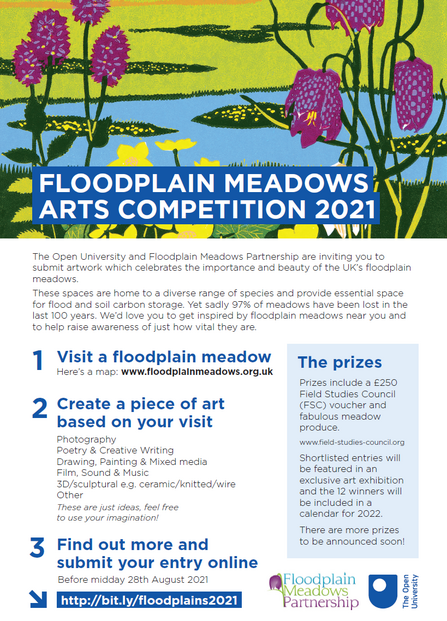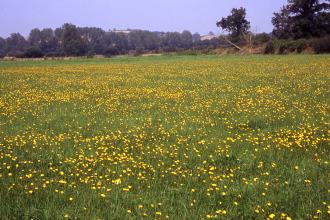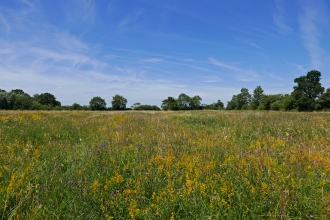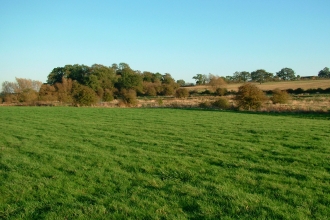June is the best month to appreciate one of our area’s special habitats; floodplain meadows. With their array of colourful wildflowers, including great burnet, ragged robin, meadow vetchling and cuckooflower in full bloom, these isolated gems along the Nene and Ouse become wildlife hotspots. Our Reserves teams have been taking a well-deserved break from habitat management to monitor our meadows in order to inform their management, and there is plenty of other meadows related work going on both by ourselves and one of the conservation organisations we work closely with, the Floodplain Meadows Partnership.
Floodplain Meadows – Nature, Science & Art
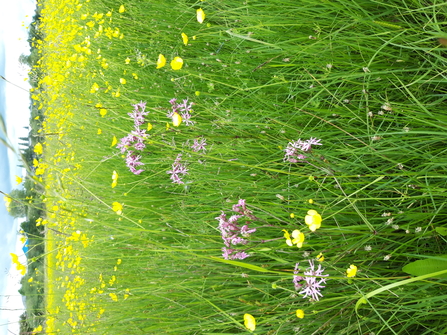
Meadow restoration, Oundle
Last week I returned to a floodplain meadow on the banks of the River Nene, near Oundle with our Farming for the Future project. I first visited this site in 2015, when we undertook a restoration project as part of the Nene Valley Nature Improvement Area. Back then it was a grassy field with a good range of grasses but few wildflowers (lost many years ago). Now there is an area with scattered ox-eye daisy, ladies bedstraw and knapweed. This year we’re planning to restore more of the meadow, putting into practice the lessons learnt along the way, much of it advice supplied by a FMP visit a few years ago. Hopefully better ground prep and aftercare will see wildflowers flourish once again across this meadow.
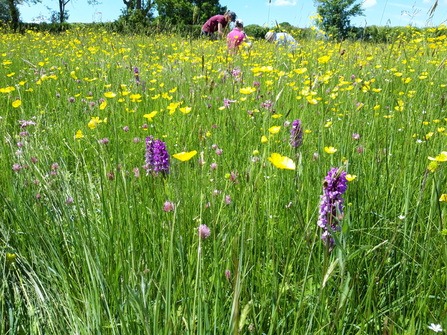
In recent years the true scientific value of floodplain meadows has become clearer with their role in carbon storage coming to the fore. Whilst trees have become the poster boys (or girls) of carbon sequestration, the value of the undisturbed soils of floodplain meadows in storing carbon long-term is becoming better understood. With their diversity of plant species depositing carbon at different depths into the soil, depending on root depth this is a habitat that is a vital but undervalued carbon sink.
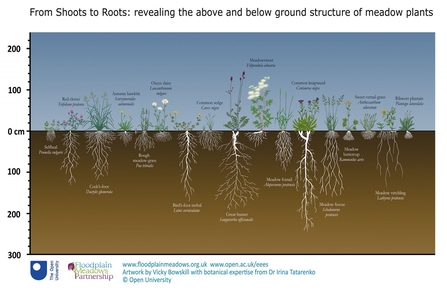
This month the FMP are launching an arts competition to raise awareness of the UK’s diminishing floodplain meadow resource. The competition is open to everyone and budding artists are asked to observe these wonderful floodplain meadows and create a piece of art that represents the importance and beauty of this natural habitat.
